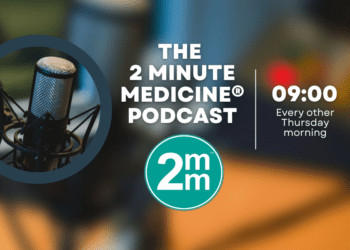Patient Basics: Lead Poisoning
Originally published by Harvard Health.
What Is It?
Lead is a metal that is poisonous (toxic) when inhaled or eaten. Lead gets into the bloodstream. It is stored in the organs, tissues, bones and teeth.
With increasing or prolonged exposure, lead can cause:
- Permanent damage to the central nervous system, especially the brain
- Delayed development in children
- Behavioral changes in children
- Decreased production of red blood cells (anemia)
- Hearing problems
- Damage to the reproductive systems of men and women
- Kidney disease
- Convulsions (seizures)
- Coma
The leading source of exposure to lead is lead-based paint. This was outlawed for residential use in 1978. But it remains in some older homes. The main hazard is paint dust. Paint dust enters the air when old paint is scraped, sanded or begins to flake.
People can get lead into their bodies in other ways. These include:
- Drinking water from pipes that are made of lead or use lead solder
- Using ceramic dishes made with lead
- Using products made with lead-containing paint (often imported from other countries)
- Playing in lead-contaminated soil
- Using lead in hobbies or crafts such as making stained glass
- Using certain home remedies that contain lead
- Eating lead-contaminated spices purchased in foreign countries (unusual)
Children face the most serious risk. Their growing bodies absorb more lead. Young children, especially toddlers, tend to put objects in their mouths that may be covered with lead dust. If lead paint is flaking, small children sometimes eat the sweet tasting paint chips. Or they chew on painted surfaces, such as window sills.
Adults who have high lead levels in their blood usually were exposed in the workplace. Industries with a high potential for exposure include:
- Construction that involves welding, cutting, blasting or other disturbances of surfaces painted with lead
- Smelter operations
- Radiator repair shops
- Firing ranges
Young children can be exposed to lead when parents who work in these areas carry lead dust home on their clothes and shoes.
A woman who had lead poisoning can pass lead on to her fetus if she becomes pregnant. This remains true even if she no longer is exposed to lead.
Since lead was banned in gasoline and residential paint, average blood levels of lead have dropped dramatically in the United States.
In children, lead levels of 5 micrograms or more per deciliter (mcg/dL) of blood are known to be hazardous. Recent studies suggest that even lower levels may be harmful. Pediatricians closely monitor children whose lead level is approaching 5 (mcg/dL). They are encouraged to look carefully for possible sources of lead exposure.
Symptoms
Children with blood lead levels of 5–25 mcg/dL usually do not show any obvious symptoms of too much lead in the body. The damage may not be obvious. It only becomes noticeable at school age, when the child shows signs of possible learning disabilities, behavioral problems or mental retardation.
At higher exposures, children may experience:
- Decreased production of red blood cells (anemia)
- Tiredness and fatigue
- Headaches
- Severe abdominal pain and cramps
- Hearing problems
- Slowed growth
- Persistent vomiting
- Convulsions
- Coma
Adults with blood lead levels of 40–50 mcg/dL may display some of the same symptoms, or any of the following:
- Inability to sleep
- Memory and concentration problems
- Infertility
- Kidney damage
- High blood pressure
- In pregnant women:
- Stillbirths
- Miscarriages
- Premature births
- Problems in fetal neurological development
Diagnosis
A doctor who thinks someone has lead poisoning will do a physical examination. He or she will ask about:
- Symptoms
- Medical history
- Potential environmental exposure to lead
- Diet
- Any learning or behavior problems (in children)
Lead poisoning is diagnosed with a simple blood test.
Blood tests can also be used for lead screening. Because there are often no early symptoms, a blood test is the best way to identify children at risk of lead poisoning at an early stage.
Lead screening typically starts at age 6 months to 12 months. Lead screening guidelines vary from state to state, but the minimum screening is at 1 and 2 years. The CDC and the American Academy of Pediatrics recommend that children under age 6 be tested for lead if they:
- Live in or regularly visit a house or day care center built before 1950
- Live in or regularly visit a house built before 1978 that has been remodeled in the last six months
- Have a brother, sister, house mate or playmate who is being treated for lead poisoning
- Live with a parent whose job or hobby involves exposure to lead
- Live near an active smelter, battery recycling plant or other industry likely to release lead into the air
- Have been seen eating paint chips or dirt
- Have low levels of iron in the blood (anemia)
- Have never been tested for lead
Expected Duration
It may take several weeks, months or years for lead to leave the body, even after there is no further exposure.
Prevention
To prevent lead poisoning, avoid or minimize exposure to lead. Remove lead paint or contain it with frequent cleaning:
- Careful and frequent cleaning has been shown to reduce exposure to lead substantially.
- Use a mop or sponge with warm water and an all-purpose cleaner to regularly clean floors and other surfaces.
- Frequently wash a child’s hands, toys and pacifiers with soap and water.
- If you have lead paint in your home, do not try to remove it or paint over it yourself. Improper removal of lead paint can make contamination worse by sending lead-containing dust into the air.
- Hire a professional trained in lead abatement techniques.
- If you have lead pipes or lead solder in your plumbing, or if you have an older house and are not sure about the pipes, call your local health department or water supplier for information on getting your water tested.
- Meanwhile, use only cold water for drinking, cooking and for making baby formula.
- Run the water for 15 seconds to 30 seconds before drinking it, especially if you have not used the water from that faucet for a few hours.
- If your job involves potential lead exposure:
- Insist that your employer comply with all federal and state laws to protect workers and to monitor their health.
- Follow all recommended measures (masks, protective clothing, etc.) to protect yourself.
- Before coming home, shower and change your clothes.
- Launder your work clothes separately from those of the rest of the family or from clothes you do not wear for work.
For more information on sources of lead poisoning and ways to prevent them, visit the Lead website at the Centers for Disease Control, www.cdc.gov/nceh/lead.
Treatment
For all cases of lead exposure, the most important step is to remove the source of lead. When this is done, treatment is not usually necessary if the blood lead level is less than 20 mcg/dL. However, repeat blood tests to be sure the amount of lead in the bloodstream stays low.
Higher levels of lead in the bloodstream may need to be treated. Treatment consists of taking a drug that binds to the lead and helps the body to remove it. This process is called chelation therapy.
Doctors decide whether to use chelation therapy on a case-by-case basis. Very high levels of lead (70 mcg/dL or greater) sometimes require hospitalization to begin therapy.
After treatment and/or removal of the environmental lead source, the doctor normally will do more blood lead tests. Blood tests help track blood levels until they are no longer too high.
Besides recommending a nutritious diet, the doctor also may recommend iron or calcium supplements. If a child with lead poisoning has iron-deficiency anemia, it is very important that the anemia be treated. Anemia puts the child at higher risk.
When To Call a Professional
If you are the parent or guardian of a child under age 6, make sure he or she visits a health professional regularly. Discuss possible risks of lead poisoning with the doctor have your child get tested if necessary.
See the child’s doctor immediately if you notice symptoms of lead poisoning or suspect that the child has been exposed to lead.
Prognosis
The outlook for children with lead poisoning depends on:
- The amount of lead in the body
- How long the child was exposed
- How the child responded to treatment
Children with brief, low-level exposures usually recover completely. Many children with low to moderate lead exposure for prolonged periods have decreased intellectual function. Even with appropriate treatment, children with high levels of blood lead can have severe, irreversible brain damage.
Additional Info
American Academy of Pediatrics (AAP)
141 Northwest Point Blvd.
Elk Grove Village, IL 60007-1098
Phone: 847-434-4000
Fax: 847-434-8000
http://www.aap.org/
Centers for Disease Control and Prevention
Lead Poisoning Prevention Program
http://www.cdc.gov/nceh/lead/default.htm
National Institute for Occupational Safety and Health
4676 Columbia Parkway
Mail Stop C-18
Cincinnati, OH 45226
Toll-Free: 1-800-356-4674
Fax: 513-533-8573
http://www.cdc.gov/niosh/
National Safety Council
1121 Spring Lake Drive
Itasca, IL 60143-3201
Phone: 630-285-1121
Fax: 630-285-1315
http://www.nsc.org/
U.S. Department of Labor’s Occupational Safety & Health Administration (OSHA)
200 Constitution Ave.
Washington, D.C. 20210
Phone: 202-693-1999
Toll-Free: 1-800-321-6742
TTY: 1-877-889-5627
http://www.osha.gov/
U.S. Environmental Protection Agency (EPA)
Ariel Rios Building
1200 Pennsylvania Ave., N.W.
Washington, DC 20460
Phone: 202-272-0167
http://www.epa.gov/




